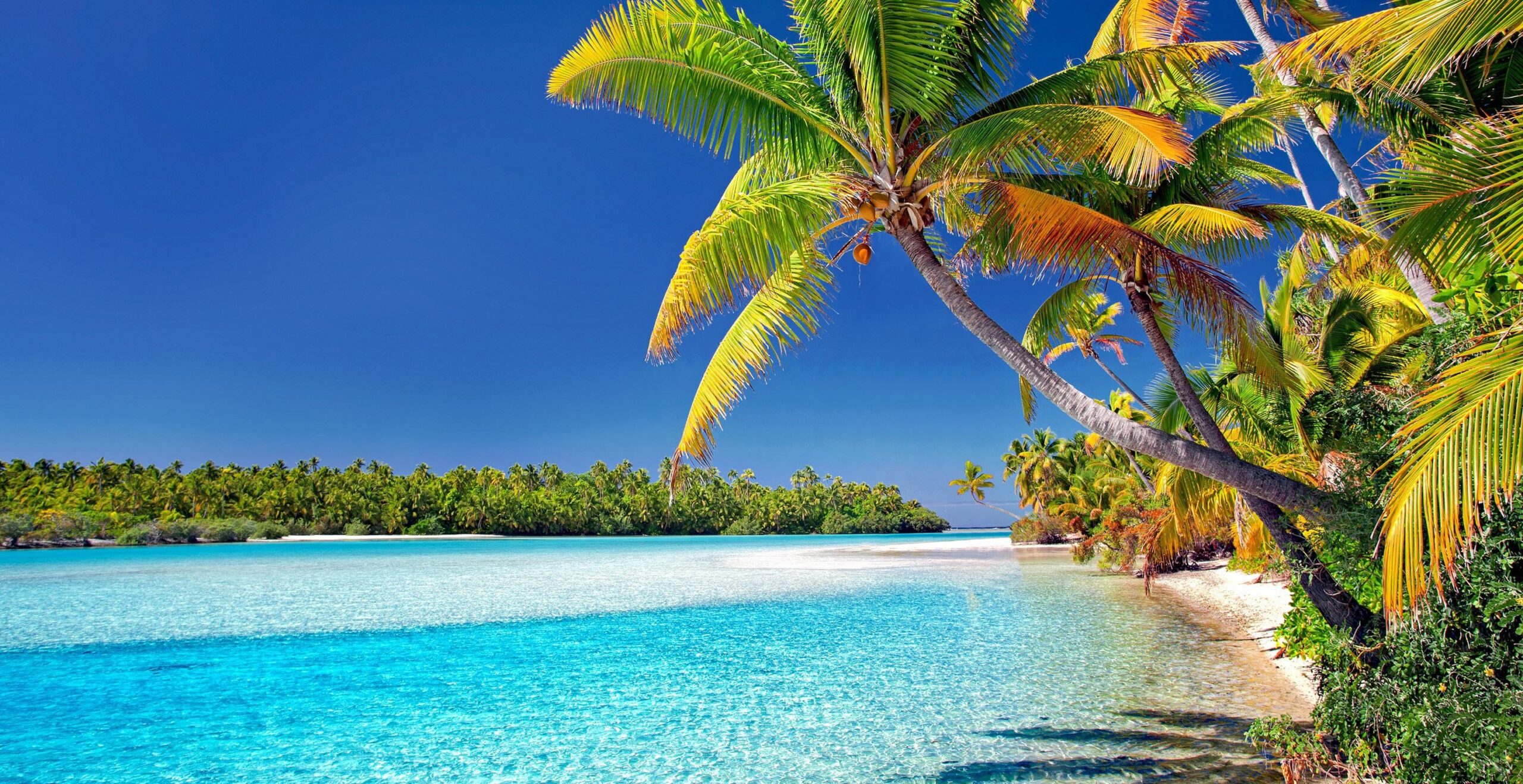Discover the Cook Islands

Warm welcomes. Turquoise waters. Timeless Polynesia.
The Cook Islands are a dream destination in the heart of the South Pacific. Scattered across vast stretches of ocean between Fiji and Tahiti, this 15-island nation combines natural beauty with heartfelt hospitality. From the palm-fringed lagoons of Aitutaki to the lush volcanic peaks of Rarotonga, the Cook Islands deliver tropical paradise with a peaceful, authentic feel — no high-rises, no mass tourism, just you and the rhythm of island life.
How to Get There
The Cook Islands’ main entry point is Rarotonga International Airport (RAR).
- From New Zealand: Daily direct flights from Auckland (3.5 hours) with Air New Zealand and Jetstar.
- From Australia: Seasonal flights from Sydney and Brisbane.
- From the U.S.: Weekly direct flights from Honolulu (Hawaiian Airlines).
- From Tahiti (PPT): Flights to Rarotonga operate via Air Rarotonga.
No visa required for most travelers for up to 31 days. The local currency is the New Zealand Dollar (NZD).
What to See & Do in the Cook Islands
1. Rarotonga – The Heart of the Cook Islands
Rarotonga is the capital and cultural center — a lush volcanic island encircled by coral reefs and turquoise lagoons.
- Muri Lagoon – Kayak, snorkel, or paddleboard in calm, clear waters.
- Te Rua Manga (The Needle) – Hike to this iconic mountain peak for epic views.
- Punanga Nui Market – A Saturday must-do for local crafts, tropical fruits, and music.
- Avarua – The main town, with shops, cafes, a museum, and the historic Cook Islands Christian Church (CICC).
Public transport is easy here — a bus loops the island in both directions every hour.
2. Aitutaki – The Lagoon of Dreams
A short flight from Rarotonga (45 minutes), Aitutaki is the jewel of the Cook Islands.
- Aitutaki Lagoon – Often called one of the most beautiful lagoons on Earth.
- One Foot Island – Famous for its post office, powdery beaches, and unreal turquoise water.
- Lagoon cruises – Glass-bottom boat tours, snorkeling safaris, and beach BBQs.
- Scuba diving & paddleboarding in crystal-clear waters.
3. Snorkeling & Diving
- Muri Beach (Rarotonga) – Easy access to coral gardens and colorful reef fish.
- Aroa Marine Reserve – One of the best free snorkeling spots.
- Night snorkeling – See bioluminescent creatures on guided tours.
- Diving – Several dive shops on Rarotonga and Aitutaki offer reef and wreck dives, including the Mataora wreck.
4. Island Hopping to the Outer Islands
If you want to go beyond Rarotonga and Aitutaki:
- Atiu – Caves, coffee plantations, birdwatching, and a strong local culture.
- Mangaia – One of the oldest islands on Earth, ideal for geology and history buffs.
- Ma‘uke, Mitiaro, and Manihiki – Remote and peaceful, offering deep cultural immersion and rare black pearl farms.
Flights to these islands are via Air Rarotonga and often require pre-booking.
5. Hiking & Eco Adventures
- Cross-Island Track (Rarotonga) – Hike through lush jungle to “The Needle” and across to the southern coast.
- Raemaru Lookout – Easier climb with coastal views and wildflowers.
- Guided eco-tours – Discover native plants, ancient sites, and stories from local guides.
6. Local Cuisine & Markets
- Ika mata – Fresh raw fish marinated in coconut cream and lime.
- Rukau – Steamed taro leaves in coconut cream.
- Tropical smoothies & BBQ stalls – Found in roadside markets and beach cafes.
- Punanga Nui Market – Best on Saturday mornings for food, crafts, and music.
7. Atiu – Island of Birds and Caves
Known as “Enuamanu” (Land of Birds), Atiu is wild, unpolished, and bursting with nature and tradition.
- Anatakitaki Cave – A limestone cave with underground pools and rare glowworms.
- Kopeka birds – Only found here; they navigate the dark caves using echolocation.
- Tumunu culture – Visit a traditional bush beer hut for storytelling and song.
- Cycling and hiking – Easygoing trails through plantations and native bush.
When to Visit
- Best weather: May to October (dry season) – mild temperatures, lower humidity.
- Warmer/wetter season: November to April – occasional tropical rains, still warm and lush.
- Events:
Te Maeva Nui (July/August) – National celebration of culture, with dance competitions and parades.
Vaka Eiva (November) – International outrigger canoe racing festival.
Practical Travel Tips
- Currency: New Zealand Dollar (NZD); local Cook Islands coins are also in use.
- Language: English and Cook Islands Māori.
- Time zone: GMT -10.
- Electricity: NZ/Australia plug type (230V).
- Connectivity: Good 4G coverage on Rarotonga and Aitutaki. SIM cards available at the airport.
- Transport:
- Rarotonga: Buses circle the island clockwise/counterclockwise every hour.
- Scooter rental: A fun and cheap way to explore (helmet required, license check needed).
- Air Rarotonga: Connects the outer islands with daily/weekly flights.
The Cook Islands are a rare mix of accessibility, safety, culture, and raw natural beauty. Whether you’re dreaming of overwater sunsets in Aitutaki, hiking jungle trails on Rarotonga, or wandering through caves in Atiu, this destination offers deep, authentic experiences far from crowded resorts.